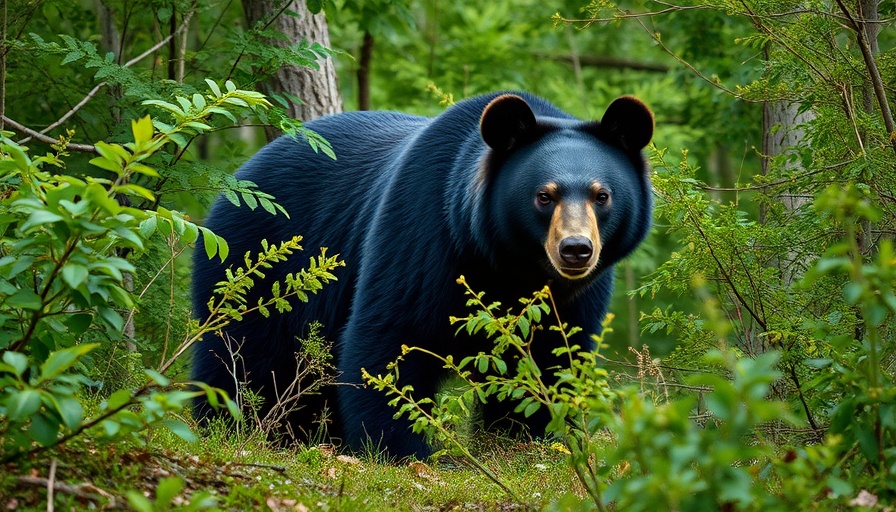
Tragic Bear Attack: A Woman's Brush with Nature
In a startling incident near Comstock, Wisconsin, a 69-year-old woman fell victim to a black bear attack that left her seriously injured. The woman reported the attack to authorities around 2 p.m. on July 12, prompting an immediate response from local law enforcement and wildlife officials. Tragically, the specifics of her condition remain unknown following her transport to a hospital.
Insights into Wildlife Behavior and Safety
During the investigation, officers spotted a black bear cub nestled in a nearby tree, revealing that this incident likely involved the mother bear defending her young. A 2019 report from the University of Wisconsin-Stevens Point provides valuable context, indicating that over half of black bear attacks are defensive in nature and that a startling 91% of these incidents involve female bears with cubs. This paints a picture of the fierce protective instincts instilled in these animals, especially when their young are threatened.
The Uncertain Fate of the Mother Bear
As authorities failed to locate the mother bear, traps have been strategically placed in hopes of capturing her. However, officials have stated that if the bear is caught, the protocol dictates it will be euthanized. The uncertainty surrounding the reasons for the attack further adds complexity to the situation as officials navigate both human safety and wildlife conservation.
Understanding the Context of Human-Wildlife Interactions
The relationship between humanity and wildlife is becoming increasingly strained due to various environmental factors. A staggering 73% decline in global vertebrate wildlife over the last 50 years can largely be attributed to human activities such as habitat destruction, pollution, and climate change. As we venture closer to nature, the fight for survival becomes a harsh reality for both sides.
Wildlife in Our Backyards: A Call to Action
Understanding the dynamics between local wildlife and human inhabitants is crucial, particularly for those who enjoy outdoor activities in the high desert and wild landscapes. Accepting that untamed animals often view humans as intruders when they feel threatened can foster a culture of mutual respect. Awareness programs and local community initiatives focused on coexistence with wildlife are essential.
Protecting Our Environment: A Community Effort
The responsibility of preserving wildlife doesn't fall solely on government agencies or conservationists; it requires communion and participation from the entire community. By supporting local and national conservation efforts, we contribute to restoring habitats and safeguarding species. Even a simple act, like donating to wildlife preservation organizations, can make a significant impact.
Conclusion: Connecting with Nature Responsibly
More than just a shocking headline, this incident serves as a reminder for everyone who loves exploring the great outdoors. Let us take this opportunity to deepen our respect for wild life and consider our role in their habitats. Together, as a community, we can create solutions that prioritize safety while celebrating the majestic creatures we share our environment with.
 Add Row
Add Row  Add
Add 




Write A Comment